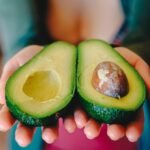Because managing diabetes doesn’t mean saying goodbye to sweetness!
Living with diabetes can often feel like walking a tightrope — balancing what you eat with how your body reacts. One of the biggest myths out there? That people with diabetes have to avoid fruit completely. 🍎🚫❌ Not true! In fact, nature’s sweet treats — fruits — can be both delicious and diabetes-friendly when you know which ones to choose and how to enjoy them. 🙌💚
In this article, we break down the top 10 fruits that help keep blood sugar stable, provide powerful nutrients, and taste like pure sunshine — all while making you feel empowered instead of restricted. 🌞🍍
Let’s dive in…
💡 What Makes a Fruit Diabetic-Friendly?
Before we get to the juicy list, here’s what to look for when choosing fruits that won’t cause sugar spikes:
✅ Low Glycemic Index (GI): Measures how quickly a food raises blood sugar (lower = better).
✅ High Fiber Content: Helps slow down digestion and sugar absorption.
✅ Whole, Not Processed: Fresh or frozen fruits are far better than juices or dried versions.
✅ Portion Control: Yes, even healthy fruits can spike your sugar if eaten in excess.
🫐 1. Berries (Blueberries, Raspberries, Strawberries, Blackberries)
Why we love them: Berries are like nature’s candy — sweet, tangy, and full of antioxidants like anthocyanins. They fight inflammation, reduce insulin resistance, and are incredibly low in calories.
🧠 Bonus: The fiber keeps you full and helps regulate blood sugar levels.
Try this: Add a handful to oatmeal, yogurt, or eat plain for a guilt-free snack.
GI Score: 25–40 ✅ (Low)
🍏 2. Apples (with skin on!)
“An apple a day keeps the sugar spikes away” — especially when you eat it with the skin, which is loaded with fiber and antioxidants. Apples also contain polyphenols that slow down carb digestion.
💡 Pro tip: Eat with almond butter to add healthy fat and protein.
GI Score: 36–38 ✅ (Low)
Serving size: 1 small to medium apple
🍒 3. Cherries
Tiny but mighty! Cherries are bursting with flavor and help reduce oxidative stress, a major contributor to diabetes complications.
❤️ Did you know? Cherries may also help with better sleep thanks to natural melatonin.
GI Score: 20 ✅ (Very Low)
Serving size: 1/2 cup fresh or frozen (no sugar added)
🍐 4. Pears
Often overlooked, pears are sweet, satisfying, and rich in soluble fiber which helps stabilize blood sugar and support digestion.
🌟 Gold tip: Let them ripen naturally for peak sweetness and nutrition.
GI Score: 38 ✅ (Low)
Best combo: Sliced with cottage cheese or low-fat Greek yogurt
🍊 5. Citrus Fruits (Oranges, Grapefruit, Lemons, Limes)
Refreshing, hydrating, and packed with vitamin C and flavonoids, citrus fruits help lower inflammation and boost immunity.
⚠️ Caution: Stick to whole fruits — juices lack fiber and spike sugar fast.
GI Score: Around 40 ✅ (Low)
Try this: Grapefruit with breakfast or a lemon wedge in your water 🍋
🍑 6. Peaches
Peaches in summer? Yes, please! They’re full of vitamin A, potassium, and fiber, and can help with hydration and satiety.
😋 Pro tip: Grilled peaches with cinnamon = healthy dessert win.
GI Score: 42 ⚠️ (Moderate – watch portions)
Best serving: Half to one medium peach
🍉 7. Watermelon (in moderation!)
Yes, it’s higher in GI, but don’t panic! Watermelon’s glycemic load is low because it’s 90% water. That means in reasonable amounts, it can be part of a healthy diabetic diet.
💧 Hydration + sweetness = a win in hot weather.
GI Score: 72 ❗ (High GI, but low glycemic load)
Stick to: 1 cup diced, eaten with protein like nuts or string cheese
🍌 8. Bananas (especially green-ish ones)
Ripe bananas may be higher in sugar, but slightly unripe bananas contain resistant starch, which supports gut health and may improve insulin sensitivity.
🥜 Hack: Pair half a banana with peanut butter for a perfect snack combo.
GI Score: 42–62 ⚠️ (Moderate – depends on ripeness)
Best serving: Half a medium banana
🥭 9. Mango (in small amounts)
Sweet, tropical, and totally dreamy — mangoes can still fit into your diet. They’re full of vitamin A, C, and fiber, but the key is portion size.
🍹 Try this: A few cubes in a smoothie or mixed with veggies in a salad
GI Score: 51–56 ⚠️ (Moderate)
Best serving: 1/4 to 1/2 cup fresh mango
🍇 10. Grapes
These bite-sized gems are perfect for portion control and full of resveratrol, which supports heart health and may help regulate blood sugar.
❄️ Snack tip: Freeze grapes for a cool, slow-eating treat that satisfies cravings.
GI Score: 53 ⚠️ (Moderate)
Serving: 10–15 grapes (about 1/2 cup)
💬 Final Thoughts: You Deserve Sweetness Without the Stress
Living with diabetes isn’t about deprivation — it’s about making mindful, empowered choices that help you feel strong, supported, and in control. ✨💪
Fruits are one of nature’s best gifts. They offer more than just flavor — they give you vitamins, antioxidants, hydration, and fiber — all things your body needs to thrive.
So next time you reach for a snack, go ahead — enjoy that handful of berries or crisp apple slice. You’re not “cheating.” You’re choosing well. ❤️
🌟 Quick Summary Chart
| Fruit | GI Score | Best Portion | Key Benefit |
|---|---|---|---|
| Berries | 25–40 | ½–1 cup | Antioxidants, fiber, low sugar |
| Apples | 36–38 | 1 medium | Fiber-rich, portable |
| Cherries | 20 | ½ cup | Low GI, great flavor |
| Pears | 38 | 1 medium | High fiber, gentle on digestion |
| Oranges | ~40 | 1 small | Hydrating, vitamin C |
| Peaches | 42 | ½–1 fruit | Vitamin A, sweet & juicy |
| Watermelon | 72 (low GL) | 1 cup | Hydrating, portion-sensitive |
| Bananas | 42–62 | ½ banana | Resistant starch, energy-boosting |
| Mango | 51–56 | ¼–½ cup | Nutrient-rich, tropical flavor |
| Grapes | 53 | ½ cup (10–15) | Heart-healthy, antioxidant-rich |






